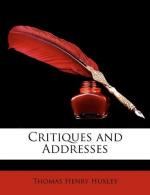Thus, all this abundant wealth of money and of vivid life is Nature’s interest upon her investment in club-mosses, and the like, so long ago. But what becomes of the coal which is burnt in yielding this interest? Heat comes out of it, light comes out of it, and if we could gather together all that goes up the chimney; and all that remains in the grate of a thoroughly-burnt coal-fire, we should find ourselves in possession of a quantity of carbonic acid, water, ammonia, and mineral matters, exactly equal in weight to the coal. But these are the very matters with which Nature supplied the club-mosses which made the coal. She is paid back principal and interest at the same time; and she straightway invests the carbonic acid, the water, and the ammonia in new forms of life, feeding with them the plants that now live. Thrifty Nature! Surely no prodigal, but most notable of housekeepers!
VI.
ON CORAL AND CORAL REEFS.
The marine productions which are commonly known by the names of “Corals” and “Corallines,” were thought by the ancients to be sea-weeds, which had the singular property of becoming hard and solid, when they were fished up from their native depths and came into contact with the air.
“Sic et curalium, quo
primum contigit auras Tempore durescit:
mollis fuit herba sub undis,”
says Ovid (Metam. xv.); and it was not until the seventeenth century that Boccone was emboldened, by personal experience of the facts, to declare that the holders of this belief were no better than “idiots,” who had been misled by the softness of the outer coat of the living red coral to imagine that it was soft all through.
Messer Boccone’s strong epithet is probably undeserved, as the notion he controverts, in all likelihood, arose merely from the misinterpretation of the strictly true statement which any coral fisherman would make to a curious inquirer; namely, that the outside coat of the red coral is quite soft when it is taken out of the sea. At any rate, he did good service by eliminating this much error from the current notions about coral. But the belief that corals are plants remained, not only in the popular, but in the scientific mind; and it received what appeared to be a striking confirmation from the researches of Marsigli in 1706. For this naturalist, having the opportunity of observing freshly-taken red coral, saw that its branches were beset with what looked like delicate and beautiful flowers, each having eight petals. It was true that these “flowers” could protrude and retract themselves, but their motions were hardly more extensive, or more varied, than those of the leaves of the sensitive plant; and therefore they could not be held to militate against the conclusion so strongly suggested by their form and their grouping upon the branches of a tree-like structure.




